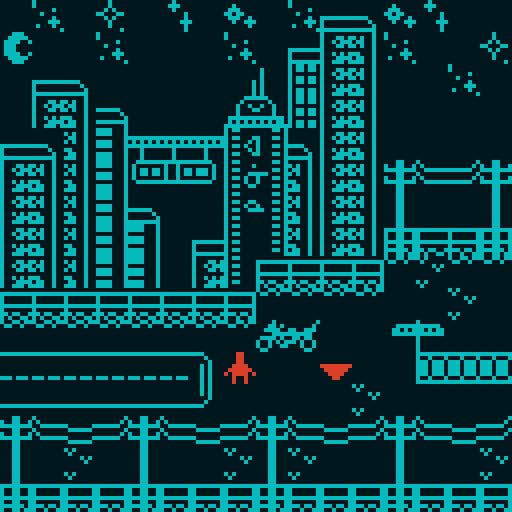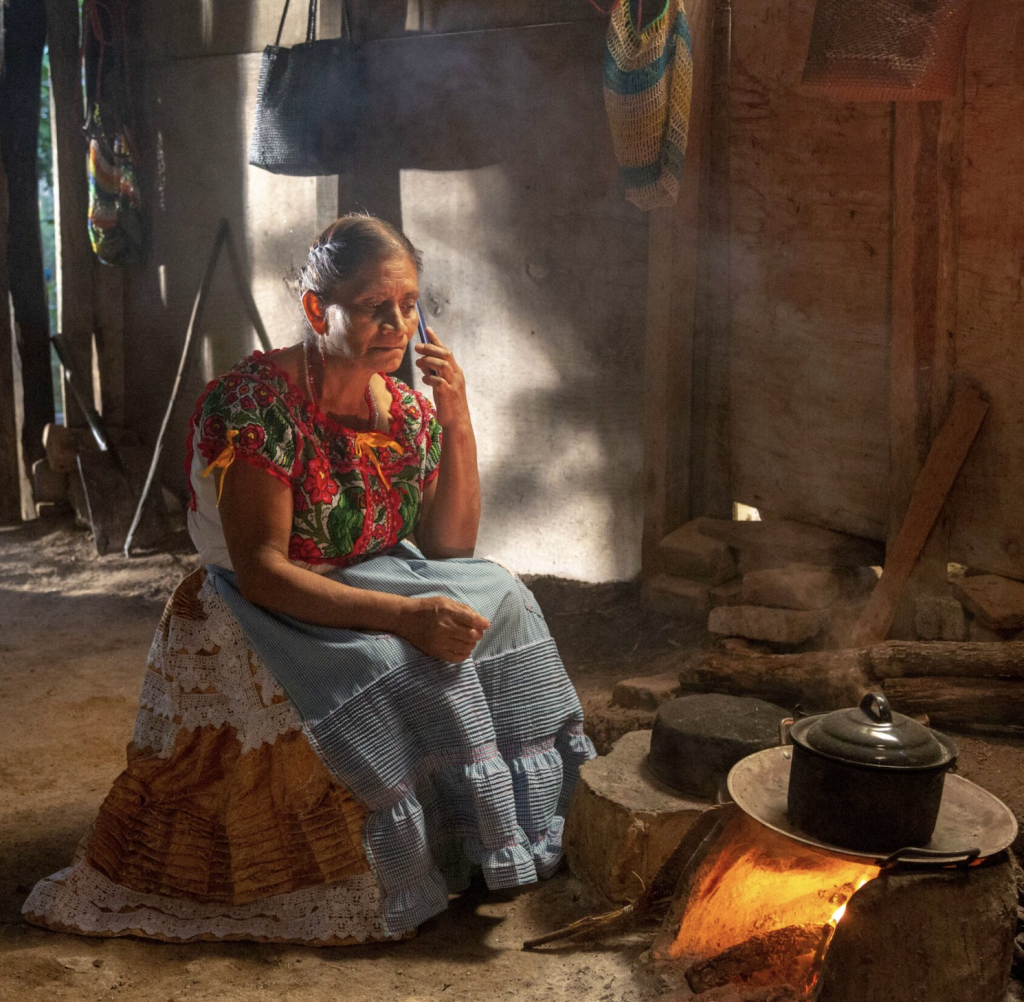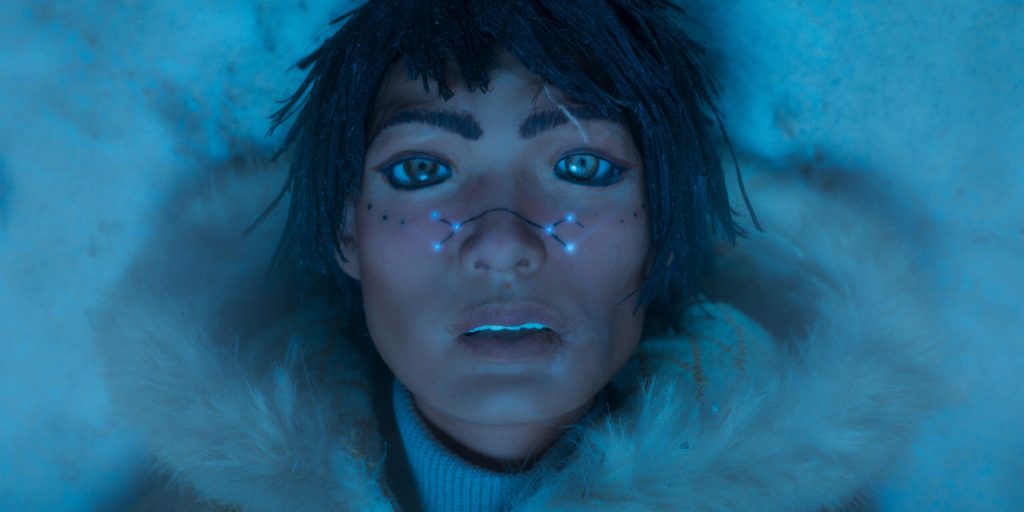Indigenous History Month is the perfect opportunity to dive into imagineNATIVE, the world’s largest presenter of Indigenous screen content. Since 2000, its yearly film and media arts festival has provided a golden opportunity to Indigenous creators from around the world. This year, imagineNATIVE marked its 25th anniversary by showcasing 55 Indigenous nations, 20 feature films, 11 shorts programs, and many more exhibits and special screenings.
Although the in-person festival in Toronto wrapped up on June 8th, the online festival continued until June 15th, and I was able to access some of the feature films and shorts programs. These are but a few highlights; I highly encourage you to visit their website for more information and to stay tuned for next year’s program.
iNdigital Showcase
The online iNdigital space features animations, audio works, video games, and podcasts that focus on Indigenous art, expanding imagineNATIVE’s scope beyond simply screening films online. The audio works this year were stunning, including numerous podcasts about Indigenous cinema and history, interviews, a comedic audio drama about a nosy elder, and several more experimental musical and soundscape designs. Both the online and in-person versions of this special showcase are entirely free, ensuring that the largest audience possible is able to access them.
Out of all the online showcase offerings, I enjoyed learning about the video games the most. Several augmented reality games, such as Buffalo Futurism, allowed in-person users to navigate physical spaces and learn about the essential role buffalos play in Nakota culture. With their own devices, users could explore a plane where 3D animated buffalo and zombies roam as these stories are narrated by Joely BigEagle-Kequahtooway.
While the augmented reality games were intriguing, my favourite games to play were both computer games. Among these highlights resides TheoGames’ Carmilla The Lonely, which follows a lesbian vampire living in a small community and struggling with the ethics of blood-drinking. orange pekoe by vanny, in contrast, is a cozy speculative game in which a pit mining site has been turned into an Anishinaabe metropolis, and the player must attempt to return to their home level of the mine. I love these types of games, in which decisions are fluid and the worldbuilding and character relationships are left for me to discover independently. Even in a game with a very simplistic pixel art style like orange pekoe, it’s easy to be charmed by the characters’ dialogue.
Ultimately, the value of the iNdigital Showcase is both its commitment to supporting Indigenous creators and its incredible diversity. The impact of a festival like this can not be overstated, as both the films and the showcase provide a valuable platform for marginalized creators who historically have not had the ability to share their work this widely. Furthermore, imagineNATIVE is a major leg up for indie and independent Indigenous artists, as it connects them to an audience who’s already more likely to be interested in their work. It also offers its audience a unique opportunity to connect to certain experiences that would otherwise remain inaccessible. Buffalo Futurism, a game tied to Māmowimīwēyitamōwin Park in Regina, Saskatchewan, created a special dimension that allowed those physically present in Toronto to use the game properly. Thus, people who don’t have plans to travel to Regina would likely never have known about the game without the help of imagineNATIVE.
La Raya
Of all the feature films, La Raya is by far my favourite. Independent filmmaker Yolanda Cruz crafts a compelling emotional portrait of migration and its impact on those who are left behind.
In the fictional town of La Raya in Oaxaca, Mexico, whose large Chatino population reflects Cruz’s heritage, the majority of able-bodied adults have left to work in the North. Sotera Santos (Diana Itzel Cruz Baltazar) is one of the many children left behind and spends her days with her best friend, Eric. One day, they discover that a brand-new fridge has mysteriously materialized in the cemetery. Still, there is far more to it than a potential payday: unexplained magic allows the fridge to connect the families in the town to their loved ones up north. Distorted reflections and voices appear, leaving the villagers stunned and unsettled by this unexpected connection to their spouses and family.
Suddenly, Sotera’s father comes back into her life. He wants to bring her to live with him and his new wife. Sotera must decide whether she will bend to her father’s will and depart from the only town she’s ever known, or stay in La Raya.
It’s refreshing to see that, as Cruz begins to dabble in magical realism, she does not overstate herself. Although Sotera believes the fridge to be God’s answer to her prayers, its existence is inexplicable, and even the elders of the village can’t rationalize its sudden appearance. Cruz also draws a distinct line between the spiritual practices of the Chatino people and the fridge, which keeps the movie from falling into the trap of portraying Indigenous beliefs as purely fantastical. Instead, the fridge remains symbolic of those who have migrated for work and their strained connection to the town.
The film’s real strength lies in its characters. The close relationships among those who remain in La Raya, their backstories, and how they survive while their loved ones migrate are the emotional core of the film. My favourite character was the shopkeeper Sandra (Monica Del Carmen), Sotera’s godmother and one of the most powerful people in the town. Although the money her husband sent in the past allowed her to create a thriving business and she now owns over half the town’s land, she resents her husband for abandoning her and longs for freedom. The way in which Sandra’s more private side—and her accompanying decisions on how she wants to live her life—slowly unfolds throughout the film made my heart ache.
This wonderful coming-of-age drama sprinkled with magical realism was delightful. Kudos to imagineNATIVE for screening it!
Rainbow Shorts
imagineNATIVE is also dedicated to uplifting the marginalized intersections of Indigenous communities. This shorts program, dedicated to 2SLGBTQIA+ creators and stories, features a diverse array of stories, from an autobiographical documentary of an individual’s medical transition (“Dreams of Sunlight Through Trees”) to a short film about two teenage best friends who raid one of their mothers’ wardrobes to put on a drag show (“Wait, Wait, Now!”).
The only short film—available online, at least—that touches on speculative fiction was “Kimotiwin: The Act of Stealing”. In this post-apocalyptic short, Tiska is determined to steal a flower for her lover, Nisa, from the strange creatures (a cross between demons and robots) who are insistently stripping their world of its greenery. I adore the 2D animation style of this short film, which reminds me of the cartoons I used to watch as a child. Although the post-apocalyptic setting and environmental strife could easily become grim, the characters’ insistent hope leaves a film which uplifts and empowers its audience.
The online Rainbow Shorts program was brimming with queer joy, despite any personal and societal struggles taking place in the shorts’ universes. Being able to find community through each other is extremely valuable to the characters in these films. With current social events making life more challenging for 2SLGBTQIA+ people and Indigenous people alike, it is all the more important to show not only present-day survival, but speculative stories in which queer people and Indigenous people can thrive.
The Witching Hour
As a horror junkie, there was no way I could miss the festival’s dedicated horror event. The predominant theme of the speculative short films screened this year was “post-apocalyptic,” and this was true of my two favourites from The Witching Hour: “Uncommon Ground” and “Inkwo: for When the Starving Return”.
“Uncommon Ground” follows a young woman dealing with visions of a past that she does not understand, who lives in the Coast Salish region 150 years into a future which has criminalized Indigenous beliefs. She must live off the grid with her ailing aunt to avoid detection by a fascist government, but the forest she must navigate to obtain food and medicine worsens her supposed hallucinations. Director Faith Sparrow-Crawford has put together an excellent film; the sound design is very well done. The eerie voice calling out for the protagonist and the noises of something moving in the brush kept me on the edge of my seat the entire time. Even when I was sure something was a hallucination, I could not help but become emotionally involved in the ensuing dialogue between the protagonist and the apparition. The many questions and lack of clear answers only made the continual escalation of these visions all the more frightening.
“Inkwo: for When the Starving Return” follows the gender-shifting warrior Dove and their struggle to defend their community from horrific creatures—part human, part animal—that possess and inhabit the bodies of the dead. As a person with both male and female aspects, Dove has a unique form of medicine (Inkwo) that can help them fight back.
This film felt less like a horror and more like a thriller. While the creatures are certainly horrifying, the narrative focus on resistance creates a firmly optimistic tone that I don’t typically associate with horror. Nevertheless, this short turned out to be my favourite. With a style akin to that of stop-motion animation, the film’s aesthetics enhance at once both the eerie and the beautiful aspects of Dove’s world.
Conclusion
With the success of its 25th edition, imagineNATIVE continues to thrive, providing a valuable stage to marginalized voices. This unique opportunity to experience Indigenous cultures and creativity from around the world may be better in person. Still, I was nonetheless elated to get a taste of it through their online pass. The worldwide nature of the films being screened also means that for some, unless one can travel internationally, this was the only chance to see these films.
What I came away with from the festival this year was the firm reassurance not only of Indigenous survival, but also of Indigenous people thriving. Even as they face political difficulties and environmental crises, the creators at this film festival show up for themselves and for each other to work towards a better future, and I can think of no more admirable cause to support.




